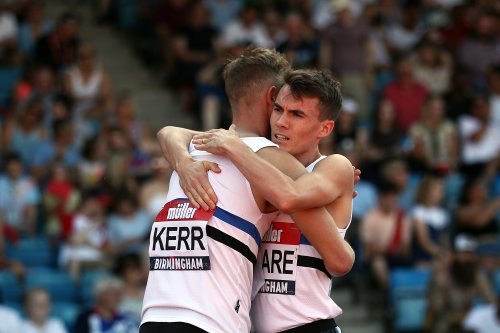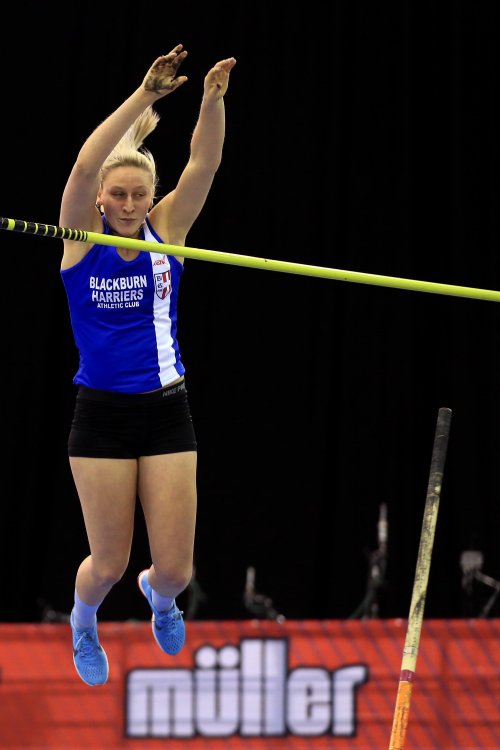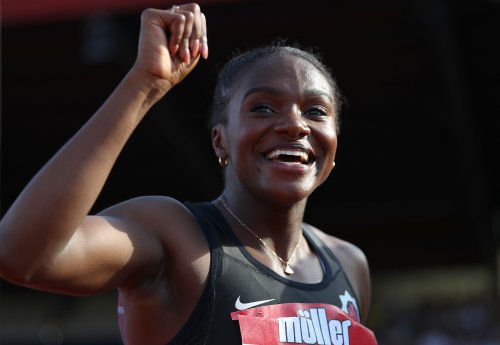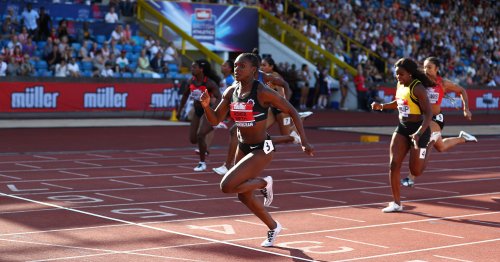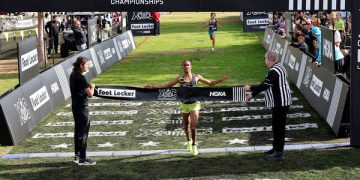Opponents but Edinburgh AC club mates, photo by Getty Images / British Athletics
The British athletics system is based around club teams as opposed to the U.S. system, which is based around school teams. Stuart Weir wrote this piece about the British system.
Athletics Clubs at the center of the sport in the UK
Athletics clubs are the backbone of the sport in the UK. It is how most athletes start and generally speaking, athletes keep an association with the club throughout their career. With opportunities to practice the sport in high schools often limited and with no sports scholarships in the UK, it is a completely different culture from America. The AW 2020 club guide listed 1750 athletics clubs in the UK.
British Athletics believes that “Clubs are at the heart of everything we do. Clubs provide different yet vitally important athletics and running experiences and are led by passionate, dedicated volunteers. Like those volunteers, we believe that being part of an organised community makes people more likely to continue in our sport and more likely to return if they have to drop out”.
Jessie Knight, now of Windsor Stough Eton & Hounslow, photo by Getty Images / British Athletics
The experience of Jessie Knight, the current GB elite athlete, is typical. She started running at elementary school and then “I went to Epsom and Ewell Harriers, my local club. And usually, it was just on a Monday night but I started competing in the under 11s, which, I think, is the youngest age group with competitions. I’ve always loved competing and my family was so supportive, driving me everywhere, which enabled me to carry on during my younger years”.
Holly Bradshaw, Blackburn Harriers, photo by Getty Images / British Athletics
Holly Bradshaw told AW: “I would recommend joining a club as you meet people and friends for life at an athletics club. I have had some of my favorite moments of a child while competing for Blackburn Harriers at Northern League fixtures”.
Dina Asher-Smith tells the story of how a school friend’s offer to buy her an ice cream persuaded her to accompany the friend to a children’s academy. She has been associated with Blackheath and Bromley Harriers from the beginning and is still coached by John Blackie, whom she met as a primary school girl at the club. There’s a photograph of Dina on the club website but equally prominently a photograph of two girls in the current under 17 section.
Dina Asher-Smith, Blackheath and Bromley Harriers, photo by Getty Images / British Athletics
When the pandemic struck last year, Dina decided to take the year off competition and concentrate on training. Her only races were 3 at 150m and a 75m in the Blackheath and Bromley open and other club events. When Olympic and double world champion, Christine Ohuruogo, retired in 2017 she ran her last race for Newham and Essex Beagles – having joined the club at the start of her career, she felt it was fitting to finish their too.
Dina Asher-Smith, Blackheath and Bromley Harriers, photo by Getty Images / British Athletics
Olympic medalist and track announcer, Katherine Merry, is quoted in the AW club guide: “being part of the club shaped my whole athletic journey. My first club, Rugby AC was very, very important because it was my first taste of proper athletics. It gave me confidence, it gave me guidance and it gave me the true spirit of belonging to the athletic club”. Aged 13, she moved to Birchfield Harriers. She is still involved currently serving as president of the Birchfield club.
The Birchfield website mentions training for the various age groups from 10 to 60+ with regular competitions in the British Athletics League and UK Women’s Athletics League.
Marilyn Okoro wrote in an AW article Me and my club: “I’m adamant that, without my club and the start it gave me, as well as the league meets, I definitely wouldn’t have had the career and experiences I’ve had.”
Athletes often compete at the national championships in their club vests as a kind of symbolic recognition of the club’s contribution to their career. Eilidh Doyle is one of those: “‘I started at Pitreavie and I’m still a member, I was nine when I went there because my big sister had won a cross-country race with the school and got invited along. I just tagged along to keep her company, enjoyed it and that’s how I started out. I’ve stayed there ever since. For me, whenever I compete at the British or Scottish Championships, I always wear my Pitreavie AAC vest”
The traditional warm up junior program at diamond leagues in Britain consists of age group club relays, giving the athletes an opportunity to win money for their clubs.
The way are elite athletes continue their connection with the clubs is one of the strengths of the sport in the UK. And the sport owes a debt of gratitude to the coaches and officials who run the 1750 clubs.
Author

Since 2015, Stuart Weir has written for RunBlogRun. He attends about 20 events a year including all most global championships and Diamond Leagues. He enjoys finding the quirky and obscure story.
View all posts

